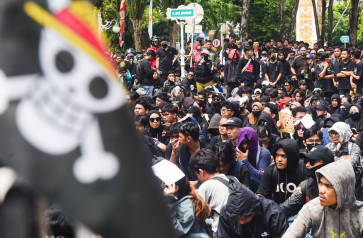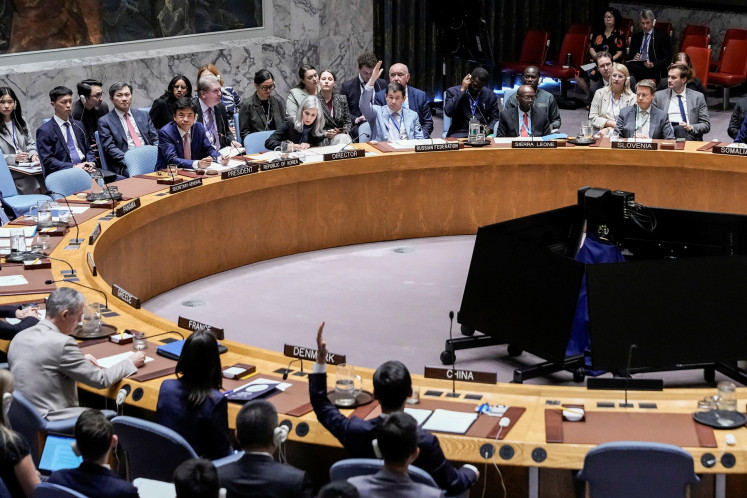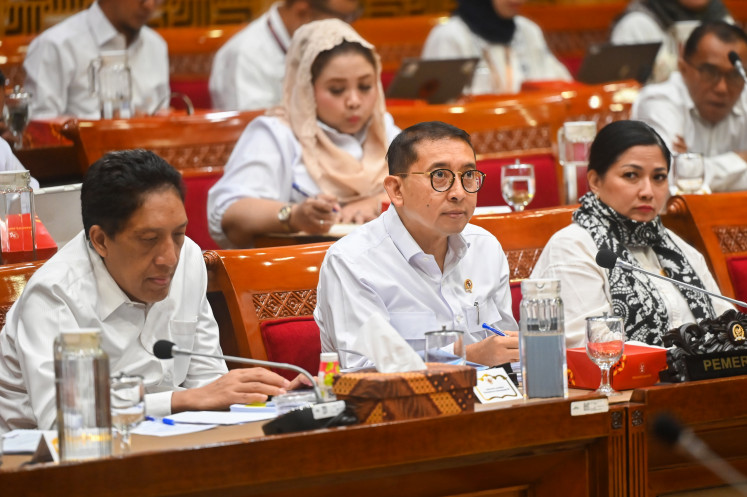Popular Reads
Top Results
Can't find what you're looking for?
View all search resultsPopular Reads
Top Results
Can't find what you're looking for?
View all search resultsPapuan path to peace
Papua, under Indonesian rule since May 1, 1963, has been a land of conflict
Change text size
Gift Premium Articles
to Anyone
P
apua, under Indonesian rule since May 1, 1963, has been a land of conflict. It has to be transformed into a land of peace. For this transformation, a Papuan path to peace is urgently needed.
Seeking to find a proper path to peace, we need to review all polices applied in Papua by the Indonesian government over the past 48 years.
The government has adopted two approaches in its efforts to settle the Papuan conflict. First, the government applied a security approach. It has been manifested through committing state violence against the Papuans, deploying thousands of troops, forming new infantry battalions, establishing new military stations and security posts and sending in more mobile brigade officers. This approach has contributed little to peace in Papua.
The second approach is that of law enforcement. In applying this approach, for example, the raising of the West Papua Morning Star flag has been outlawed. Consequently, Papuans who raise the flag are always suspected as being members or supporters of the Papuan separatist movement. They are arrested by the police and jailed for more than 15 years.
Despite this criminalization of the political conflict, the reality on the ground reveals that the Papua situation remains unsettled.
While applying the two approaches, the government offered the status of special autonomy for Papua in 2001. Unfortunately, as Papua’s autonomy law has not been implemented properly and consistently by the government, none of the fundamental problems in the region have been addressed yet.
Despite pouring billions of rupiah into Papua for 10 years, there has been no significant improvement in living standards among Papuans, let alone those Papuans living in remote and isolated villages.
Due to all these failures, a new Papuan path to peace needs to be developed. The steps on the Papuan path to peace should be comprehensive in their dimensions. They should address all the fundamental problems and basic needs of people in the region.
The peace path should cover five dimensions, namely law and human rights, political, socioeconomic and environmental, sociocultural and security dimensions.
Each dimension should be complemented by some indicators of peace, problems that have to be resolved and solutions to each problem.
The steps on the path to peace should be laid out by all those stakeholders who could potentially be peacemakers or causes of conflict in Papua.
In my view, there are nine groups of stakeholders. They include indigenous Papuans, non-Papuans (migrants) living in Papua, local governments (provincial and regency governments), the police, the military (TNI), the central government, all private companies exploiting natural resources in Papua, Papuan rebels (TPN) in the jungles of Papua and Papuan leaders overseas (Papua New Guinea, Australia, Vanuatu, the Netherlands, the United Kingdom, the United States).
Each of them can give their respective and specific contribution to create lasting peace in Papua. Therefore, they should be invited to discuss and decide on the steps on the Papuan path to peace.
A proper mechanism is needed to lay out the Papuan path to peace. We need to develop a mechanism that can allow all the aforementioned stakeholders to actively participate in the discussions of the path to peace.
I would like to offer five steps to explore and elaborate on the Papuan path to peace.
The first step would be an internal discussion for each group of stakeholders. The central government should provide room for each group of stakeholders to hold internal discussions and produce their collective opinions about the path to peace in Papua.
Second, having conducted discussions within each group of stakeholders, two “regional peace conferences” need to be held in Jayapura, one for indigenous Papuans and the second for other Papuan citizens, particularly for migrants living in Papua.
The third step would be a “National conference on Peace and prosperity in Papua”. Conducted in Jakarta, the conference should be attended by representatives of indigenous Papuans, migrants, the police, the TNI, local governments and private companies. Each of them can present at the conference the results of their internal discussions. Based on the presentations, participants can work out a route map of the Papuan path to peace.
The fourth step would be a “Papuans’ conference on peace, prosperity, and development in Papua”. This conference would be for indigenous Papuans who live in the jungles of Papua and overseas. The Indonesian government should allow them to hold the conference in a Pacific country so as to discuss, without fear of intimidation or arrest, how to transform Papua into a land of peace. It is through this very conference that they could produce their united vision on the path to peace in their ancestral land.
The last step would be an “open dialogue” between representatives of the Indonesian government and indigenous Papuans. The result of the last two conferences could be brought to the dialogue table. With the help of trusted mediators, the government and the Papuans could produce a jointly agreed framework and way forward for Papua.
In all the proposed discussions and conferences, including in the final dialogue between representatives of the government and the Papuans, participants should discuss the same three questions: What are the indicators of peace in each of the five dimensions mentioned?; What are the problems under each dimension that have to be resolved for the sake of peace?; And what are the solutions to each identified problem?
Having discussed these questions with all the stakeholders, the Papuan path to peace that would be laid out through dialogue between the representatives of the government and the Papuans would genuinely be a result of common effort.
Every stakeholder would have a sense of ownership of the result of the final dialogue. Consequently, they would also be responsible for its implementation.
The Papuan path to peace would, eventually, be the common project of all the stakeholders.
The writer is a lecturer at the Fajar Timur School of Philosophy and Theology in Abepura, Papua.










